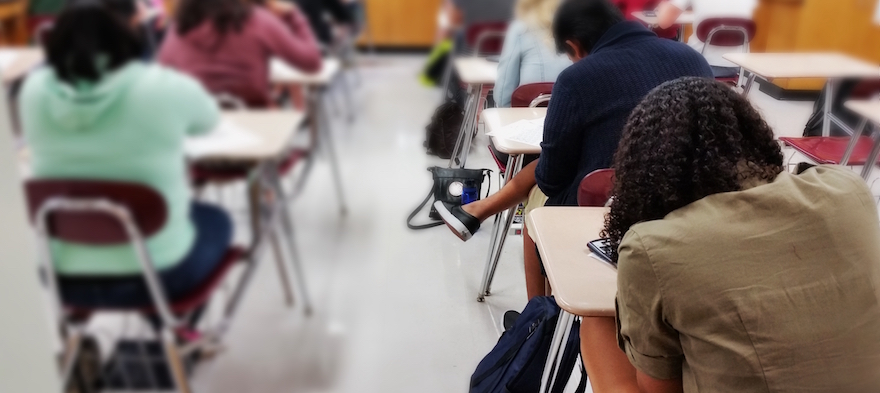While New Yorkers debate the merits of scrapping the long-used SHSAT as the gatekeeper for entry to the crown jewels of the city’s high schools, there’s another way to get at the root problem of too many underprepared elementary students, especially in Black and Latinx communities. It’s working in Chicago.
I am well aware that transplanting a bright idea that worked in one city to another doesn’t always work out as expected. Local mindsets and politics can torpedo even the best ideas.
But given the growing chorus calling for improving the elementary schools where most of New York’s Black and Latinx schoolchildren go, I’d suggest pulling this page from the Chicago playbook: Make a concerted effort to expand International Baccalaureate to more students, both in more high schools and in earlier years of schooling.
The International Baccalaureate (IB) programs got their start as a rigorous, consistent high school curriculum offered around the world to ensure children of diplomats could move easily from school to school without losing academic rigor or coherence.
IB is designed to remain consistent across schools and even nations. Teachers find IB training useful, which is not their usual experience of professional development. And research shows Chicago kids who graduate with IB exposure under their belts persist better in college, whether or not they earn the very demanding IB diploma.
In Chicago, Paul Vallas launched IB expansion by seeding a number of neighborhood high schools with International Baccalaureate programs. Once district leaders realized too few kids were sticking it out to earn the IB diploma, they made tweaks to build a pipeline. They encouraged middle and elementary schools to adopt the IB Middle Years and Primary Years programs so that students would be better prepared for the hard work ahead in high school.
It took a while for the IB programs to get established, and how many kids they serve in each high school varies, from just one classroom’s worth of kids per grade to hundreds. Lately, there has been a push for “wall-to-wall” IB: opportunities for students to benefit from IB-style learning in a variety of paths, from the full Diploma Programme to individual courses to the relatively-new Career-related Programme.
After more than 20 years of investment, Chicago Public Schools now boasts 56 IB-affiliated schools, the largest network in the nation. According to district data, 88 percent of the district’s IB students enroll in college, and the share of IB students achieving success on the rigorous diploma exams has risen from 46% in 2010 to 56% in 2017.
Meanwhile, New York’s public school students have very limited access to IB. A cursory search of Inside Schools suggests to me that, to date, only a handful of New York City’s public high schools have adopted IB. While some of them are middle-high programs that start in seventh grade, it appears very few younger students have the opportunity to benefit from IB’s emphasis on inquiry, real-world problem solving and crossing the boundaries of academic disciplines.
New York might even have the opportunity to learn from Chicago’s mistakes and start with Primary Years programs and grow up. Although the heavy political pressure to bring more Black and Latinx kids into the specialized high schools might require other strategies, too—like full-on coursework to build background knowledge across-the-board in late elementary and middle school, not just free test-prep for the SHSAT—building IB pathways from kindergarten through middle school, then capping them with more IB high school choices, could be a forward-thinking, long-term solution that improves school quality more broadly across the entire system.
Maureen Kelleher
Latest posts by Maureen Kelleher (see all)
- CPS Parents Wanted for Research Study - March 27, 2023
- Tomorrow: Cure Violence with #Belonging - August 17, 2022
- Still Looking for Summer Camp? - June 13, 2022
